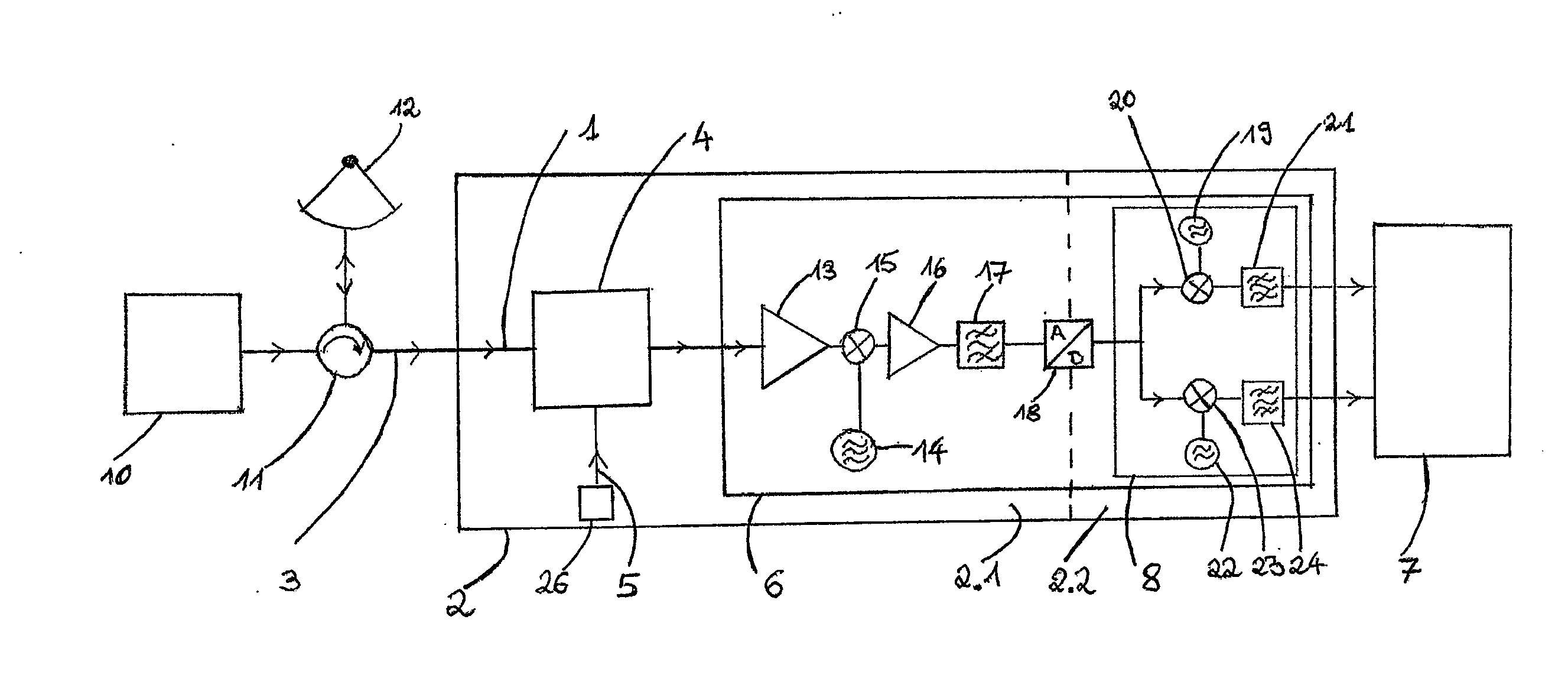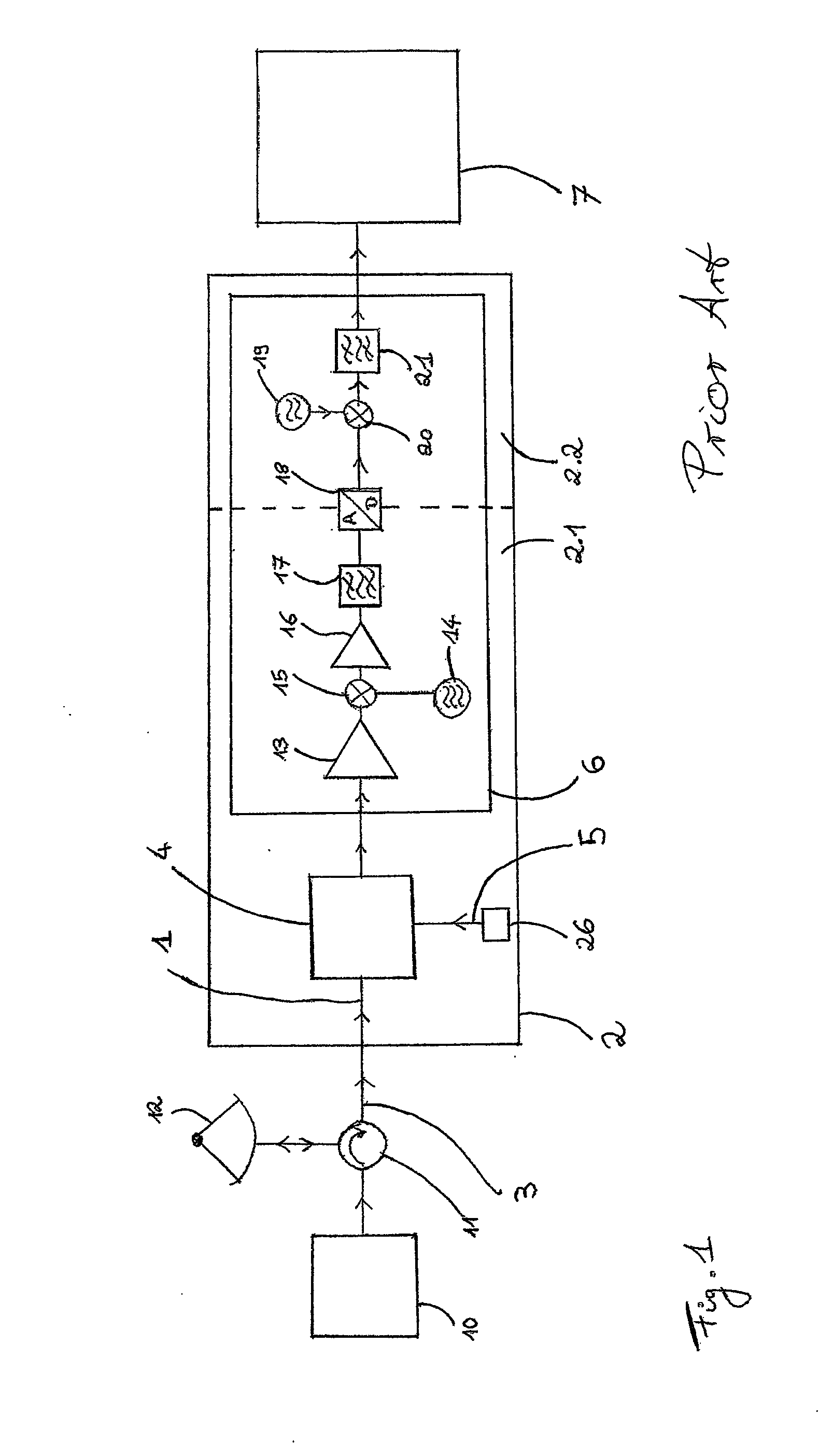Weather radar
a weather radar and radar technology, applied in the field of weather radars, can solve the problems of inability to determine the absolute value of calibration parameters, such as amplification or noise, and the inability to accurately determine the calibration parameters of individual signal paths, and achieve the improvement of the comparability of the measured data in the tx sample channel and the other receiver channels over time, and the accuracy of determining calibration parameters
- Summary
- Abstract
- Description
- Claims
- Application Information
AI Technical Summary
Benefits of technology
Problems solved by technology
Method used
Image
Examples
Embodiment Construction
[0030]FIG. 1 shows a block diagram of a weather radar according to the prior art. A radar pulse generated by a transmitter 10 can be fed in a transmission interval via a duplexer 11 to an antenna 12. In the subsequent receiving phase, the backscattered radar signal 3 received from the antenna 12 can be fed by the duplexer 11 to the receiving facility of the weather radar receiver 2.
[0031]In the signal path 1 within the receiver 2, a test signal 5 generated by a test signal generator 26 can be superimposed on the radar signal 3 via a coupler 4. According to the prior art, the frequency of the test signal 5 corresponds to that of the radar signal 3. The two superimposed signals 3, 5 can then be fed to the processing device 6 to amplify, filter and convert the two signals 3, 5.
[0032]Customary processing steps within the processing device 6 are a pre-amplification of the GHz signal by a low-noise amplifier 13, the conversion of the high-frequency signal into an intermediate frequency in...
PUM
 Login to View More
Login to View More Abstract
Description
Claims
Application Information
 Login to View More
Login to View More - R&D
- Intellectual Property
- Life Sciences
- Materials
- Tech Scout
- Unparalleled Data Quality
- Higher Quality Content
- 60% Fewer Hallucinations
Browse by: Latest US Patents, China's latest patents, Technical Efficacy Thesaurus, Application Domain, Technology Topic, Popular Technical Reports.
© 2025 PatSnap. All rights reserved.Legal|Privacy policy|Modern Slavery Act Transparency Statement|Sitemap|About US| Contact US: help@patsnap.com



